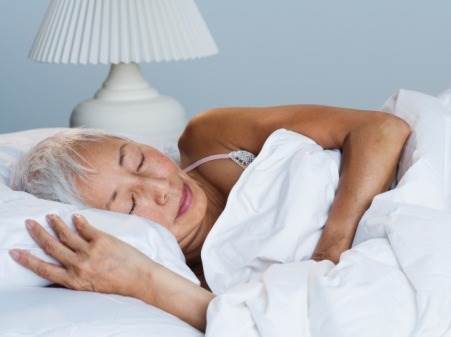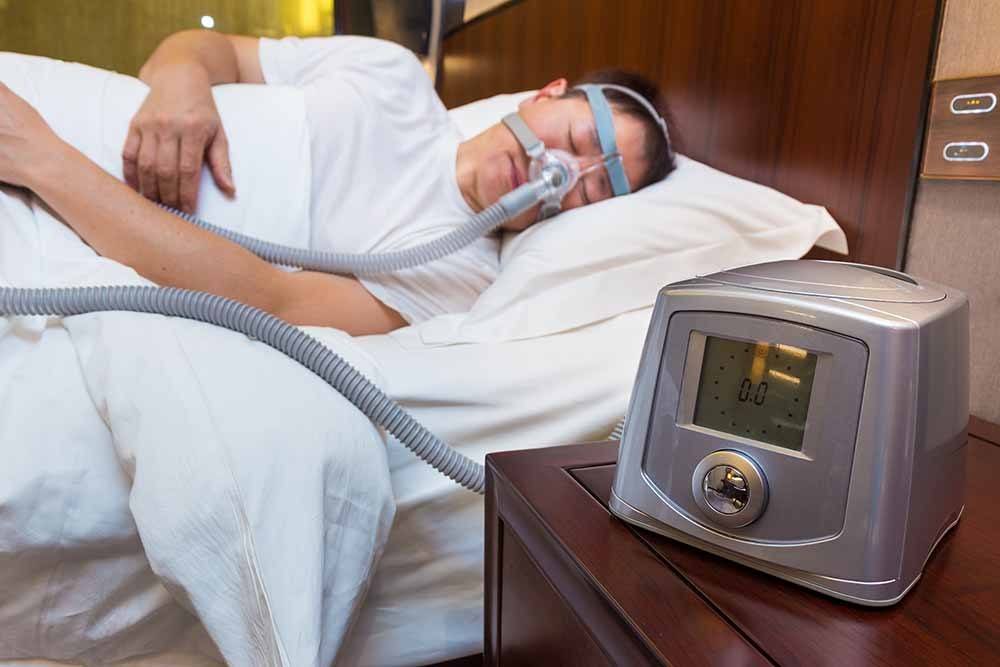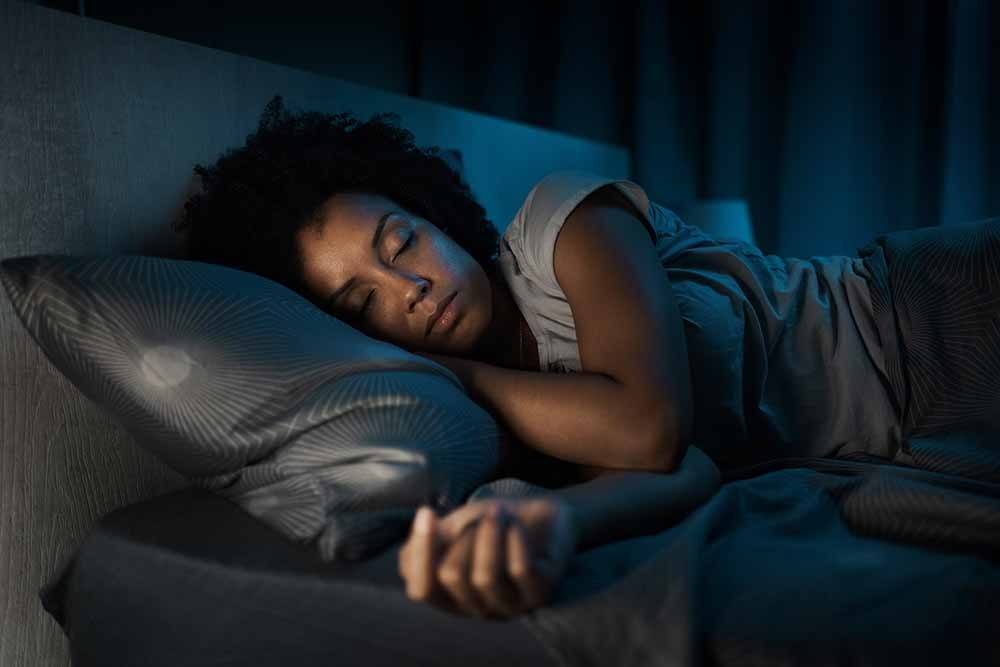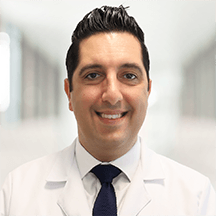

What is Sleep Apnea?
by PNI Experts
Do you suffer with sleep apnea? If you do and you are unable to tolerate the CPAP machine, an implantable second-line therapy device is available at Pacific Neuroscience Institute®. PNI offers Inspire, a medical implant for the treatment of obstructive sleep apnea with ENT surgeon, Omid B. Mehdizadeh, MD. Read on to learn more about sleep apnea.
In this article:
- Understanding Obstructive Sleep Apnea
- Diagnosis and Treatment of Obstructive Sleep Apnea
- Managing Obstructive Sleep Apnea
- Frequently Asked Questions about Sleep Apnea
- Obstructive Sleep Apnea Treatment at Pacific Neuroscience Institute
Sleep apnea is a sleep disorder characterized by repeated interruptions in breathing during sleep. These interruptions, called apneas, occur when the airway becomes blocked or collapses. Common symptoms include loud snoring, gasping for air, and excessive daytime sleepiness. Additionally, sleep apnea can lead to fragmented sleep and poor quality rest. Risk factors include obesity, a family history of sleep apnea, and certain anatomical features like a thick neck or narrow airway. Diagnosing sleep apnea typically involves a sleep study. Understanding and treating this condition is essential for improving sleep quality and overall health.
Understanding Obstructive Sleep Apnea
Obstructive sleep apnea (OSA) is the most common type of sleep apnea, characterized by repeated episodes of partial or complete blockage of the airway during sleep. These blockages occur when the muscles at the back of the throat relax excessively, causing the airway to narrow or close, and momentarily stopping breathing. This condition contrasts with central sleep apnea, where the brain fails to send proper signals to the muscles that control breathing.
When the brain is deprived of oxygen during sleep, OSA can lead to a number of serious conditions affecting not only quality of life, but brain health and function. It is important to seek medical attention.
Symptoms of Obstructive Sleep Apnea
Common symptoms of OSA include loud snoring, choking or gasping during sleep, and frequent awakenings. Additionally, people may experience excessive daytime sleepiness, headaches upon waking, and difficulty concentrating. These symptoms often result from fragmented sleep and decreased oxygen levels, impacting overall health and well-being.

Causes of Obstructive Sleep Apnea
Obstructive sleep apnea occurs when the muscles at the back of the throat relax excessively during sleep, causing the airway to narrow or close, leading to breathing interruptions. Several factors contribute to the development of OSA, including anatomical features, lifestyle choices, and underlying medical conditions.
Anatomical Contributors
- Excess Weight: Obesity is a significant risk factor for OSA. Fat deposits around the upper airway can obstruct breathing.
- Neck Circumference: A thicker neck may have a narrower airway, making obstruction more likely.
- Narrow Airway: Some individuals inherit a naturally narrow airway, which can increase the risk of OSA.
- Enlarged Tonsils or Adenoids: In children and adults, large tonsils or adenoids can block the airway.
- Recessed Chin or Enlarged Tongue: These anatomical traits can contribute to airway obstruction during sleep.
Lifestyle Contributors
- Alcohol Consumption: Alcohol relaxes the throat muscles, increasing the likelihood of airway collapse during sleep.
- Smoking: Smoking can increase inflammation and fluid retention in the upper airway, exacerbating OSA symptoms.
- Sedative Use: Medications that relax the muscles, such as sedatives or sleeping pills, can worsen OSA.
- Sleeping Position: Sleeping on the back can cause the tongue and soft tissues to fall back and obstruct the airway.
Diagnosis and Treatment of Obstructive Sleep Apnea
How is Obstructive Sleep Apnea Diagnosed?
Diagnosing obstructive sleep apnea involves a detailed evaluation by your healthcare provider. Initially, they will review your medical history and discuss your symptoms, such as snoring and daytime sleepiness. A physical examination will focus on your throat, neck, and mouth to identify any anatomical issues.
Next, a sleep study, or polysomnography, is usually recommended. This test can be conducted in a sleep clinic or at home with portable equipment. In a clinic, sensors monitor your brain activity, eye movements, heart rate, oxygen levels, airflow, and muscle activity overnight. A home sleep test uses simpler equipment to collect similar data and is often suggested for those likely to have moderate to severe obstructive sleep apnea.
After the sleep study, a specialist analyzes the results, calculating the apnea-hypopnea index (AHI) to determine severity. An AHI of 5-15 indicates mild sleep apnea, 15-30 is moderate, and over 30 is severe.
Based on your diagnosis, your doctor will discuss tailored treatment options. Early diagnosis and treatment are essential to improve sleep quality and reduce health risks.
Treatment Options for Obstructive Sleep Apnea
Treating OSA involves various methods depending on the severity and causes. Initially, lifestyle changes are recommended. Losing weight, avoiding alcohol, and quitting smoking can significantly reduce symptoms by decreasing airway obstruction and inflammation. Positional therapy, which involves sleeping on your side, can also help prevent airway collapse.
For mild to moderate cases, oral appliances can be effective. These devices, custom-fitted by a dentist, reposition the jaw and tongue to keep the airway open during sleep. They are a comfortable alternative to CPAP therapy.
Continuous Positive Airway Pressure (CPAP) therapy is the most common treatment for moderate to severe OSA. A CPAP machine delivers a steady flow of air through a mask, preventing airway collapse. Although effective, some patients find it difficult to adapt to using the mask.
Surgical options are available for patients who cannot tolerate CPAP or do not see improvement with other treatments. Procedures such as uvulopalatopharyngoplasty (UPPP), genioglossus advancement, and maxillomandibular advancement remove or reposition tissues obstructing the airway.
At Pacific Neuroscience Institute, hypoglossal nerve stimulation with the Inspire device is available as a second-line surgical option for sleep apnea that involves implanting the device to stimulate airway muscles, keeping them open during sleep.
Other alternative treatments include managing underlying conditions like allergies or hypothyroidism, using nasal decongestants, and practicing good sleep hygiene. Consulting your healthcare provider will help determine the most appropriate treatment plan, combining these approaches to effectively manage obstructive sleep apnea and improve your overall health.
What is a CPAP Machine?
A CPAP machine, or Continuous Positive Airway Pressure machine, is a device used to treat obstructive sleep apnea. It delivers a constant stream of air through a mask that covers your nose or both nose and mouth. This airflow keeps your airway open, preventing it from collapsing during sleep. By maintaining an open airway, a CPAP machine reduces snoring, improves sleep quality, and alleviates daytime sleepiness.
Using a CPAP machine involves:
- Wearing a mask: Different types of masks are available, ensuring a comfortable fit.
- Adjusting air pressure: Settings are customized to provide the right pressure to keep your airway open.
- Regular use: Consistency in using the machine every night is important for effectiveness.
Benefits include better sleep, reduced risk of health complications like heart disease, and improved overall well-being. Consulting your healthcare provider will help you get the right CPAP machine and ensure proper use.
Managing Obstructive Sleep Apnea
Living with Obstructive Sleep Apnea
Living with OSA requires effective management to ensure a better quality of life. Adhering to your treatment plan is essential in achieving that goal. Consistently using your CPAP machine or other prescribed devices can significantly reduce symptoms. Recommendations for maintaining a healthy lifestyle include losing weight, exercising regularly, and avoiding alcohol and smoking, as these changes can improve your condition.
Additional tips include:
- Sleep position: Sleeping on your side can prevent airway obstruction.
- Regular check-ups: Regular visits to your healthcare provider ensure your treatment remains effective.
- Sleep hygiene: Establish a consistent sleep schedule and create a restful environment.
By following these tips and adhering to your treatment, you can manage obstructive sleep apnea effectively, reducing symptoms and improving overall health. Your commitment to treatment plays a vital role in achieving better sleep and reducing the risk of associated health complications.
Frequently Asked Questions about Sleep Apnea
Is obstructive sleep apnea hereditary?
Obstructive sleep apnea can indeed be hereditary. Studies show that genetics play a significant role in predisposing individuals to this condition. If you have a family history of OSA, your risk increases. Certain hereditary factors contribute to the structure of your airway, which can lead to obstructive sleep apnea. Additionally, inherited conditions like obesity can increase the likelihood of developing OSA.
Genetic factors influencing OSA include:
- Airway anatomy: Traits such as a recessed chin, enlarged tonsils, or a large tongue can be inherited.
- Neuromuscular control: Genetic variations affecting the control of upper airway muscles can contribute to apnea episodes.
- Obesity: Genetic predisposition to weight gain can increase the risk of obstructive sleep apnea due to excess tissue around the airway.
Are there other treatments for obstructive sleep apnea without a CPAP?
Yes, there are other treatments for obstructive sleep apnea besides using a CPAP machine. While CPAP is a common and effective treatment, some patients find it uncomfortable. Alternative treatments include lifestyle changes, oral appliances, positional therapy, and surgical options.
Lifestyle changes can significantly improve obstructive sleep apnea symptoms. Losing weight, avoiding alcohol, and quitting smoking can reduce airway obstruction. Regular exercise and maintaining a consistent sleep schedule also help.
Oral appliances, prescribed by a dentist, can reposition the jaw and tongue to keep the airway open. These devices are custom-fitted and can be a good alternative for mild to moderate obstructive sleep apnea.
Positional therapy involves changing your sleeping position. Some people experience fewer apnea events when they sleep on their sides instead of their backs. Special pillows or devices can help maintain this position throughout the night.
For more severe cases, surgery for obstructive sleep apnea may be considered. Surgeries can include removing excess tissue from the throat or correcting structural abnormalities. An implantable device can be offered as a second-line therapy if CPAP is not tolerated. It delivers gentle pulses that move your tongue out of the way each time you take a breath, keeping your airway open while you sleep. No mask or hose is required.
Discuss these options with your healthcare provider to determine the most appropriate treatment for your condition. Finding the right solution can improve your quality of sleep and overall health
Can obstructive sleep apnea cause high blood pressure?
Yes, obstructive sleep apnea can cause high blood pressure. Frequent breathing interruptions during sleep reduce oxygen levels, leading to increased blood pressure. This condition stresses the cardiovascular system, raising the risk of hypertension. Managing obstructive sleep apnea is crucial to controlling and preventing high blood pressure.
What are the symptoms of obstructive sleep apnea in women?
Symptoms of obstructive sleep apnea in women can differ from those in men. Common signs include loud snoring, choking or gasping during sleep, and daytime fatigue. Women may also experience insomnia, headaches, mood disturbances, and difficulty concentrating. Additionally, OSA can lead to restless sleep and frequent nighttime awakenings. Hormonal changes, especially during menopause, can increase the risk. If you notice these symptoms, consult a healthcare provider for proper evaluation and management. Recognizing these signs early can significantly improve your quality of life and overall health.

How to tell if you have obstructive sleep apnea?
To tell if you have OSA, pay attention to several key symptoms. Loud snoring, gasping, or choking sounds during sleep, and frequent awakenings are common indicators. Additionally, experiencing excessive daytime sleepiness, morning headaches, and difficulty concentrating can signal obstructive sleep apnea. Monitoring your sleep patterns and asking your partner to observe any unusual behaviors can be helpful. Consider using a sleep diary to track your symptoms. If these signs are present, consult a healthcare provider. A sleep study, conducted at home or in a clinic, will provide a definitive diagnosis and help guide appropriate treatment.
Obstructive Sleep Apnea Treatment at Pacific Neuroscience Institute
If you are diagnosed with obstructive sleep apnea and cannot tolerate CPAP, you may be a candidate for the Inspire implantable device to treat OSA. Please contact our clinic for more information.
About Dr. Omid Mehdizadeh

Omid B. Mehdizadeh, MD, is an otolaryngology-head & neck (ENT) surgeon with particular expertise in voice, swallowing and airway conditions at Pacific Neuroscience Institute (PNI). A Los Angeles native, his career has spanned treating world-class opera and Broadway singers to surgical mission trips serving underprivileged and indigenous populations of Central America. Outside PNI, he has focused his time on educating medical and undergraduate students and providing medical care to disenfranchised populations through community clinics.
Obstructive Sleep Apnea Clinic Location
1301 20th St., Santa Monica, CA 904040 | 310-477-5558
Useful Links
- Brain Wellness & Lifestyle program
- Brain Health Center
- Pacific Head & Neck
- Voice & Swallow Disorders
About the Author
PNI Experts
Last updated: September 10th, 2024